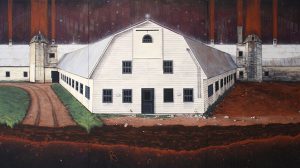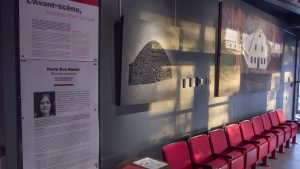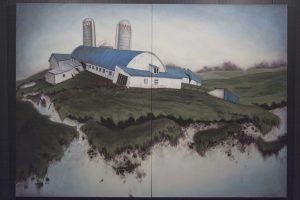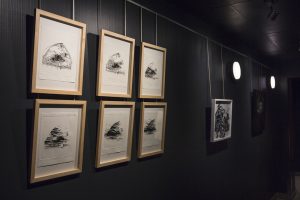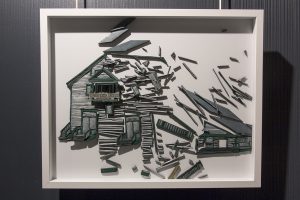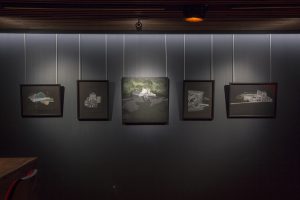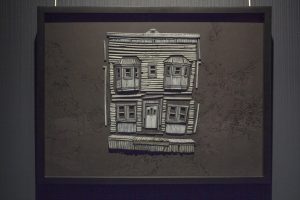Œuvres choisies — Exhibition
The works gathered in this exhibition are drawn from two series produced by the artist between 2009 and 2015. Manifesting a strongly felt connection to place, these paintings, drawings, etchings and ceramic works take as their common subject wood buildings and time’s passing. Presented in the context of Laval, the works invite us to think more seriously about our emotional relationship to nature and the built environment.
The barns
The artist has been paying attention to the agricultural world since the early 2000s. The rural landscape is in the middle of a significant transition, especially in suburban areas, but also in the heart of Quebec’s rural regions. More than 500 farms disappear every year in Quebec (according to Statistics Canada), the bulk of them to make room for development projects of various sorts, from new residential properties, to industrial parks, to malls—and this is a global phenomenon.
The artist’s work obliquely interrogates the physical and functional reorganization of these rural areas into a standard global urban model. The speed and carelessness of these transformations inspire Martel to create works that lean towards the surreal and the symbolic, works that freeze time and amplify the value of these abandoned spaces and buildings. Architecture becomes reflexive and intriguing, somewhere between reality and fiction. Martel uses the traditional barn
as the architectural symbol of rural decline in the suburbs. In a way, she attempts to make an icon of this symbol, but one that isn’t mired in associations to the Duplessis era (a now-despised period in Quebec history) or to traditional early-twentieth-century painting. The heavy religious and political baggage of these buildings is pervasive, but it may be that by wishing away these “relics”—which are at the same time witnesses to the present’s many major changes—we are forgetting to take look carefully, which is vital to understanding what is happening in these areas.
Dawson City
For six months in 2009, Marie-Ève Martel lived and worked in Dawson City, Yukon Territory, as part of an artistic residency.
Built on the shore of the Yukon River, the city and its already somewhat fragile wooden architecture is beset by problems of subsidence caused by the melting of the permafrost. During the spring melt, it is not uncommon for the water to rise past the raised sidewalks and into people’s homes. Established at the time of the Klondike Gold Rush, this mining town with echoes of the “Far West” was once one of the richest and most populated municipalities in the country; today, it counts a little more than 1400 inhabitants. To maintain its touristic appeal, Dawson City has adopted a policy of architectural preservation that applies to the town’s built heritage, requiring even new structures to respect the original style.
Marie-Ève Martel’s work documents the strange atmosphere of this North American town whose architecture has been frozen in time, abandoned by gold prospectors and threatened by climate change. She treats the situation at Dawson City as a symbol, highlighting the consequences and impasses generated by a form of economic development based on the use of natural resources.
